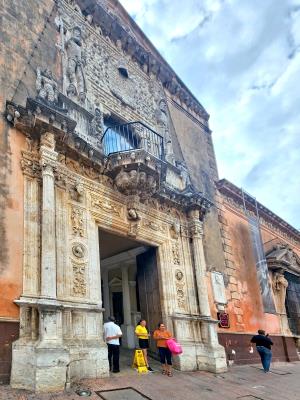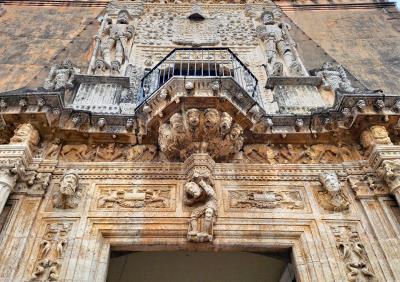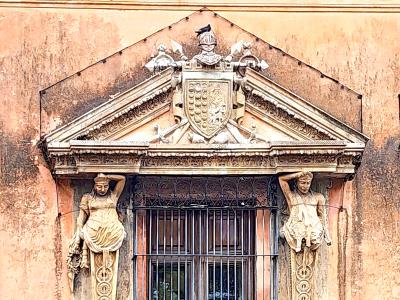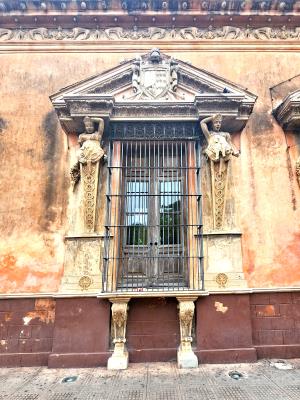Day 3 1/13/2024
Merida, Mexico
Frank's Trip
CLICK on any image to enlarge - use mouse cursor to move enlargement it if doesn't fit area
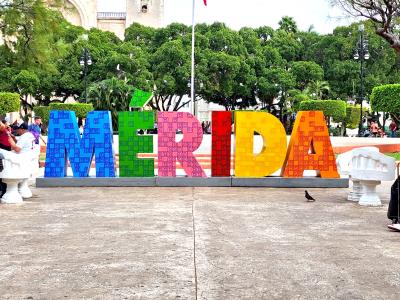
Merida, Yucatan, Mexico...
This is a lovely, historic and comfortable city to be in. In the Historic Zone almost every building has a history... so much history - so little time!
Today a visit to the central park of the city and a look at most of the buildings around it - The Cathedral of Merida is visited another day.
Plaza Grande / Parque Central / Plaza Mayor
Mérida’s street plan, drawn back in the 1500s, was made according to the checkerboard layout and a chessboard design. It was a common implementation in most Hispanic American cities and it meant that the town starts from a central square, which was commonly used as the Plaza de Armas. Towards the end of 1542, Francisco de Montejo “El Mozo” arranged the central square to become Mérida’s Plaza de Armas.
During colonial times, the Plaza Mayor witnessed the swearing-in of Spanish kings, religious processions, bullfights, and many more important events. In 1812, the square changed its name to “Plaza de la Constitución” (Constitution Square) as a result of an official disposition of the Spanish authorities. In 1821, after the independence struggle from Spain was consummated, Merida’s main park was then called “Plaza de la Independencia” and a sign on the Municipal Palace (below) commemorates this.
Francisco de Montejo destined the east for the Cathedral (Catedral de Mérida - San Ildefonso), and the north for the seat of the royal houses, the civil power. The south was reserved for the residence of the Montejos family (Casa Montejos - below). In the west, a Mayan structure was maintained until the 18th century (now the Municipal Palace - below)..
Today, the Plaza Grande is still the main square of the city.

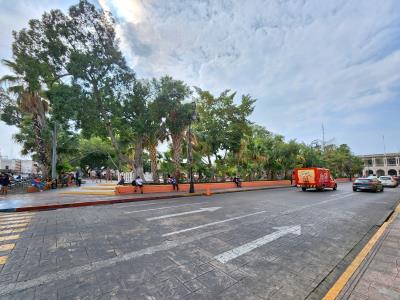
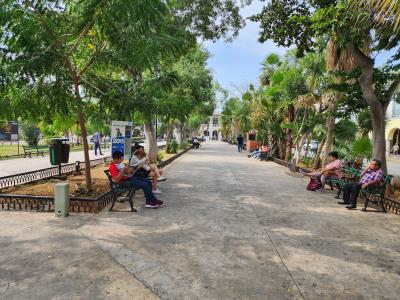
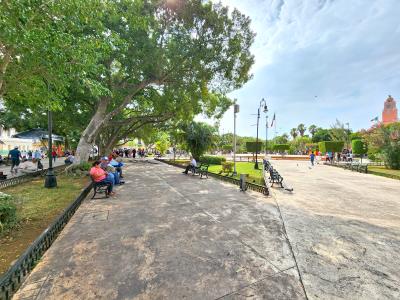

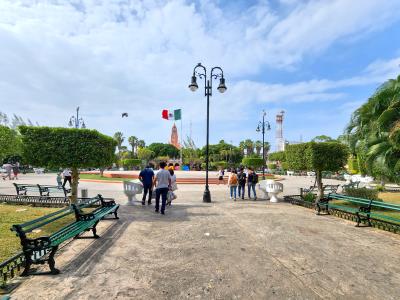

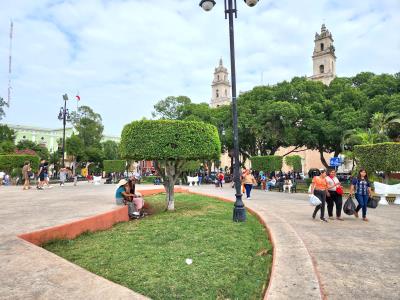
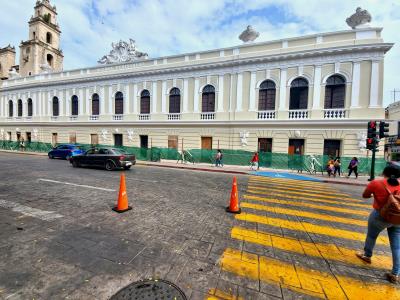
Archbishop's Palace / Museum of Art
Construction work began between 1573 and 1579, by order of Fray Diego de Landa, Bishop of the province of Yucatán, however, it was not until the bishopric of Fray Gonzalo de Salazar (1608-1636) that it was completed and designated as Archbishop's Palace.
As the years passed, the building underwent numerous transformations until it reached its final architecture of French neoclassical style.
The building also housed the chapels of San José and that of the Holy Rosary. Later it was the Conciliar Seminary of Our Lady of the Rosary and San Idelfonso. Between 1751 and 1760 under the archbishopric of Fray Ignacio de Padilla y Estrada, the second floor and balconies were built. In 1824 it was a second and third education university. In 1867 the Colegio de San Idelfonso was inaugurated.
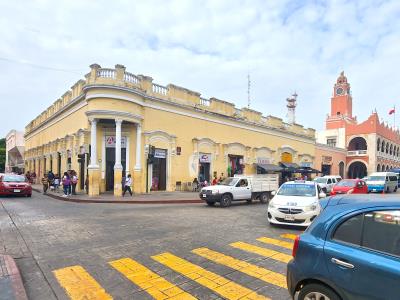
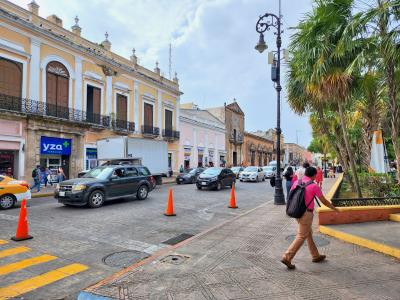


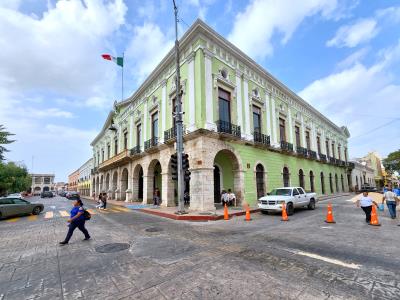
Municipal Palace / El Palacio de Gobierno
The Municipal Palace was built in 1734, undergoing several reforms that have been modifying it consistently. One of the most remarkable was in 1871 when the first clock in Merida was placed. The Council Hall is on the2nd floor.
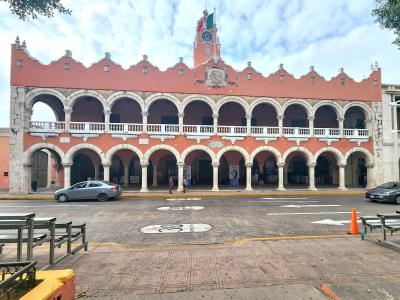
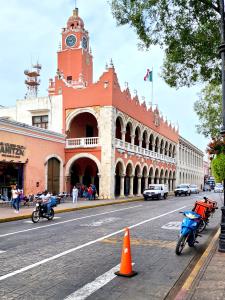
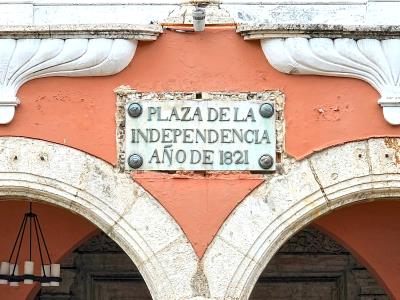



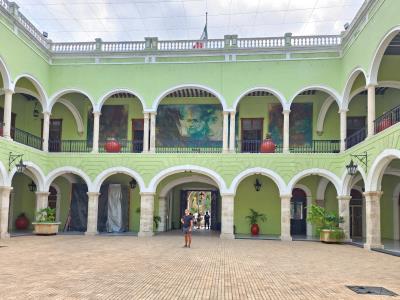
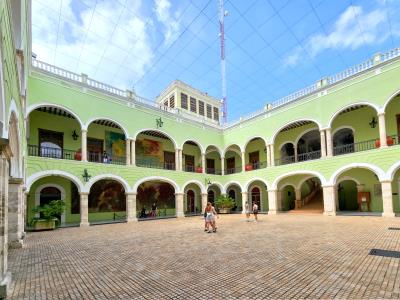

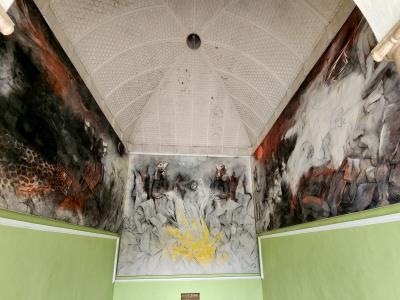

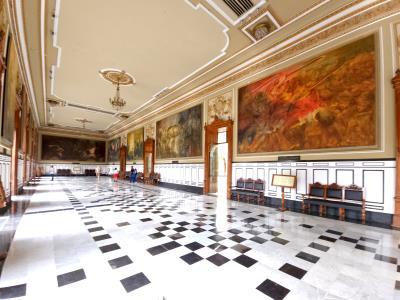


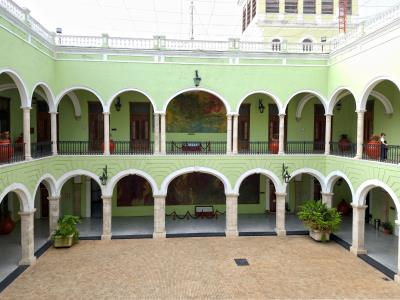
Casa Montejos - 1542
Casa de Montejo is on the south side of Plaza Grande and dates from 1540. It originally housed soldiers, but was soon converted into a mansion that served members of the Montejo family until the 1800s. Outside, the facade shows triumphant conquistadors with halberds standing on the heads of generic barbarians (though they’re not Maya, the association is inescapable).

